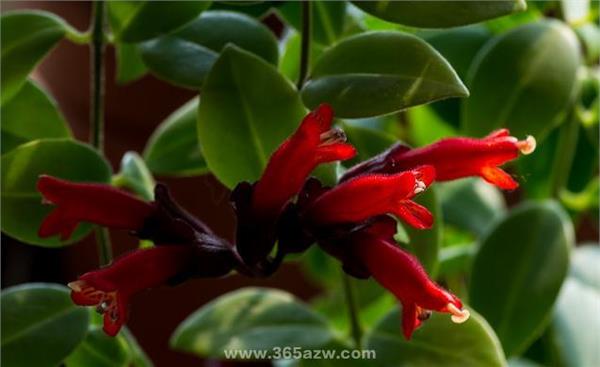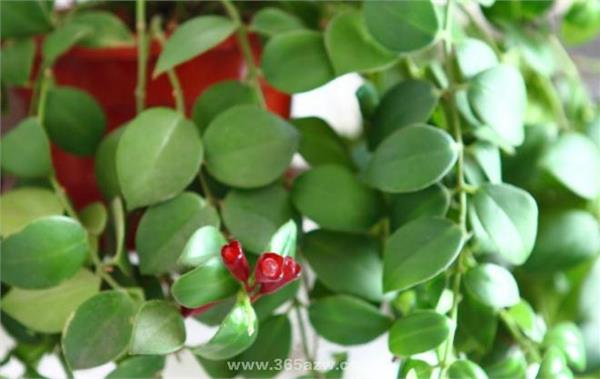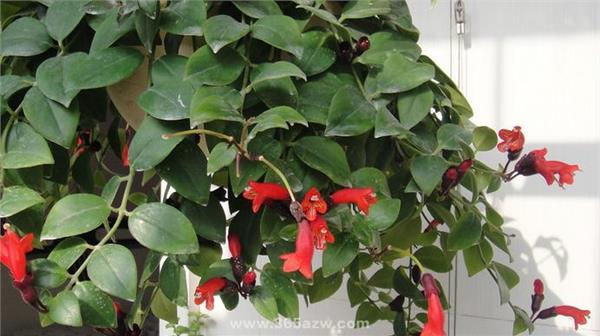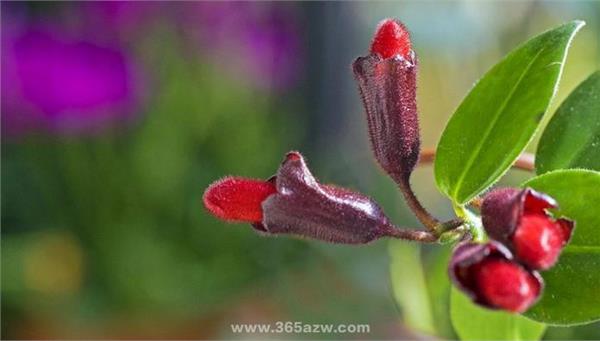How should lipstick orchids be cultured?
Many friends for lipstick hanging orchid culture method is not a special understanding, today for everyone to briefly introduce the lipstick hanging orchid culture method, let's have a look at it.

What is lipstick hanging orchid?
Lipstick Cymbidium, also known as Flower Grass, Carthamus tinctorius, is a perennial evergreen trailing herbaceous flower of the genus Gesneriaceae. Leaves ovate-opposite, slightly fleshy. Inflorescences multi-axillary or terminal, the shape is very similar to lipstick, calyx tube-shaped, much like lipstick tube-shaped shell, so it is called "lipstick hanging orchid". This flower is native to the tropics of Indonesia and eastern India, and its sex prefers a warm and bright semi-shady environment. Leaves opposite, fleshy, bright green. The branches are angular and semi-grape after elongation. The top of the branch blossoms, the color is pink to scarlet, the center is yellowish, shaped like a chrysanthemum, the petals are narrow and glossy, and the stamens are numerous from spring to autumn. Ovary inferior, without style, stigma 4. Capsule fleshy, stellate dehiscent 4-merous, seeds numerous.

Culture method of lipstick orchid
Suitable for soil: lipstick hanging orchid soil to loose and fertile sandy loam is better, drainage is good. The pot soil is slightly acidic, and the pot culture soil made of peat soil, sand and vermiculite can be used, and an appropriate amount of calcium superphosphate is added.
Lighting: like semi-overcast environment, in addition to midsummer noon strong light should be properly sheltered, other times of the year should be given sufficient light, especially in winter. If the light is too strong or insufficient in the placement site, the leaves will easily become light green or yellowish green.
Temperature: lipstick hanging orchid should be placed in a cool and ventilated place, and pay attention to maintain environmental humidity. Avoid continuous high temperature and humidity, poor drainage and ventilation will cause decay. Lipstick orchids are not hardy and need to be indoors in winter.

Watering frequency: the basin soil should always be kept moist, avoid stagnant water in the basin, so as not to cause root rot. The water demand during the peak growth period from March to September is relatively large, so it is necessary to often water and spray to increase humidity. The weather is gradually cool and cold in autumn, the amount of watering and fertilizer application should be gradually reduced, and the basin soil should be slightly dry in winter.
Pruning tips: when the growth is exuberant, you can pick the heart properly to promote branching. After the winter flowering period, the residual stems that have flowered should be cut off in time, which can save nutrients, promote new branches and make them blossom.
Prevention and control of diseases and insect pests: strong plants are not prone to diseases and insect pests, but if the basin soil is stagnant and poorly ventilated, root rot may also occur in addition to rotting roots. When the disease occurs, the diseased plant can be sprayed or irrigated with 1000 times of Gen Fu Ning, or 1500 times of 80% EC is used to irrigate the root.

Matters needing attention in lipstick culture
1. If the top buds of lipstick orchids will die for no reason, and appropriate amount of calcium fertilizer can be applied, the phenomenon of terminal bud necrosis will disappear.
2. The flowering stage of lipstick should be less nitrogen fertilizer and some nitrogen fertilizer properly. It can promote its flowering by increasing the intensity of indoor light and controlling the lower room temperature.
3. After the flowering period in winter, the residual stems that have flowered should be cut off in time, which can save nutrients, promote new shoots and make them blossom.
4. Under normal circumstances, little or no fertilizer should be applied when raising lipstick orchids.
Related
- Wuhan Hospital Iron Tree Blooming Result Was Instantly Frightened by the Gardener Master
- Which variety of camellia is the most fragrant and best? Which one do you like best?
- What is the small blue coat, the breeding methods and matters needing attention of the succulent plant
- Dormancy time and maintenance management of succulent plants during dormancy
- Minas succulent how to raise, Minas succulent plant pictures
- What are the varieties of winter succulent plants
- How to raise succulent plants in twelve rolls? let's take a look at some experience of breeding twelve rolls.
- Attention should be paid to water control for succulent plants during dormant period (winter and summer)
- Watering experience of twelve rolls of succulent plants
- Techniques for fertilizing succulent plants. An article will let you know how to fertilize succulent plants.



